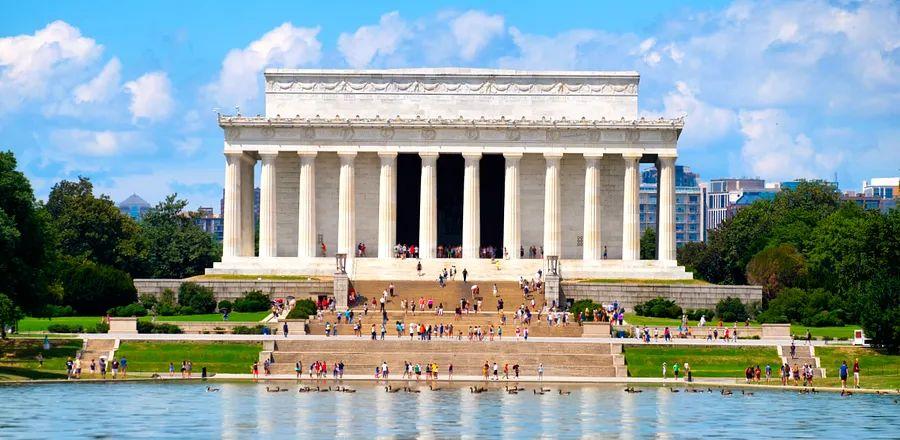Discover How Washington, D.C. is Pioneering Accessible Travel

For an accessible travel destination, Washington, D.C. stands out. Not only is it one of the most historically and culturally vibrant cities in the country, but it also aims to be highly navigable for travelers with disabilities. Many of D.C.'s top attractions, including famous landmarks like the Lincoln Memorial and renowned Smithsonian museums, provide exceptional accessibility services.
The Smithsonian ensures a welcoming experience for all visitors

Photo courtesy of washington.org
As the largest museum, education, and research complex globally, the Smithsonian Institution is famous for its vast collection of treasures. Another remarkable feature is the exceptional accessibility of its 17 museums and the National Zoo.
Visitors will discover tactile elements throughout the Smithsonian’s facilities, open captioning on all exhibition videos, and can request assistive listening devices. Individual museums can provide tactile and visual description tours if arranged in advance. Access services for public programs, such as real-time captioning and sign language interpretation, are available at most locations.
The Smithsonian also addresses the needs of mobility-impaired visitors—every museum has at least one accessible entrance and elevator. Furthermore, manual wheelchairs are offered free at all Smithsonian museums and the National Zoo on a first-come, first-served basis, and all visitors may use their own mobility devices. This reflects the Smithsonian’s commitment to fostering inclusive museum facilities, programs, and services that ensure all visitors feel valued and welcome.
Focusing on accessibility at the National Mall
Accessibility is also a key priority for the National Park Service (NPS), which manages the expansive 310-acre National Mall, featuring the breathtaking Lincoln Memorial on one end and the dome-crowned U.S. Capitol on the other.
The NPS offers free braille brochures for each memorial to onsite visitors or at any information kiosk. American Sign Language interpretation is also available upon request at no cost. Closed captioning is provided for educational films shown at the Lincoln and Thomas Jefferson Memorials and the Washington Monument.
Moreover, the interior of the Washington Monument, characterized by its white obelisk, is fully accessible for wheelchair users, as are the interiors of the Lincoln and Jefferson Memorials. The NPS also provides complimentary wheelchair services at these sites, including the Vietnam Veterans Memorial and the Korean War Veterans Memorial.

Courtesy of washington.org
For those requiring parking, permit-only accessible parking is available at the Franklin Delano Roosevelt and National World War II Memorials, as well as near the Washington Monument and the Jefferson, Lincoln, Korean War Veterans, and Vietnam Veterans Memorials. These provisions highlight the NPS's ongoing commitment to enhancing accessibility, ensuring that everyone can fully experience the National Mall.
The whole city is designed with disabled visitors in mind

Courtesy of washington.org
While Washington, D.C.’s renowned museums and monuments draw the crowds, the city also boasts historic neighborhoods, famous restaurants, and vibrant cultural attractions. Thankfully, the D.C. Department of Motor Vehicles honors disability tags from other states, ensuring on-street parking is accessible to all visitors with disabilities. Pro tip: Vehicles with disability tags can park in any designated disabled space or double the posted time in metered spaces unless stated otherwise.
For those who choose public transport, the Metro ranks among the most accessible systems globally, facilitating easy navigation throughout the District. Holders of a reduced-fare disability card from another agency or a Medicare card may be eligible for discounted fares. All trains are equipped for accessibility, featuring gap reducers for smooth boarding for wheelchair users. Additionally, every station includes elevators, oversized fare gates, and flashing lights to signal approaching trains. Some stations also have tactile tiles at the platform edge for added safety.
All Metro buses are equipped to kneel and feature lifts or low ramps. Additionally, for individuals with disabilities that make using the rail system challenging, Metro provides a door-to-door service known as MetroAccess.
Washington, D.C. is a city eager to welcome all visitors, offering a variety of accessible transportation options and attractions. Discover world-class museums, ponder U.S. history at famous monuments, and stroll through the city's lively neighborhoods for an unforgettable experience that D.C. has in store for everyone.
Head to washington.org to begin planning your adventure.
Evaluation :
5/5



